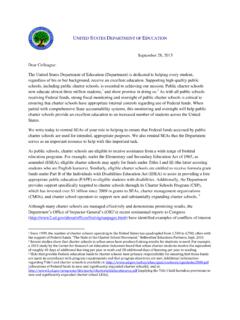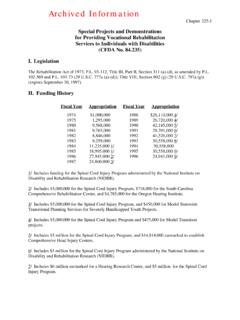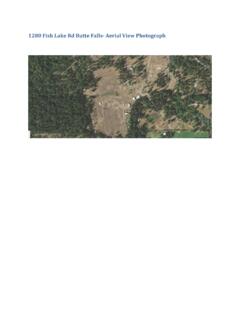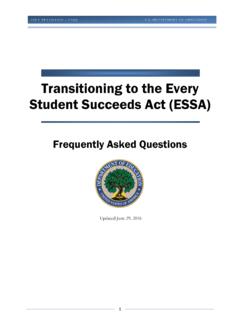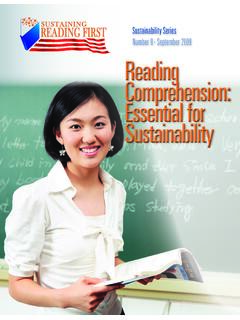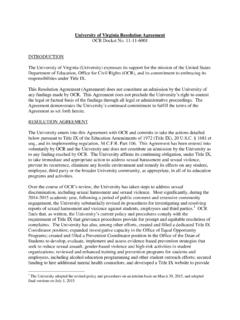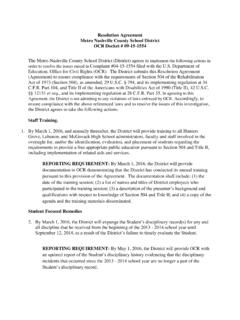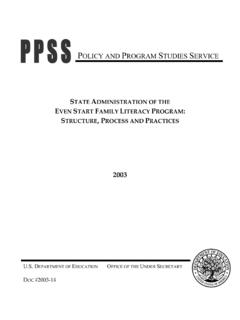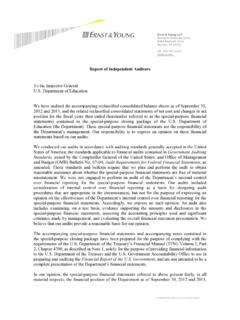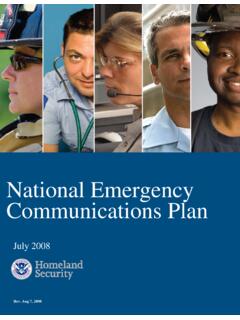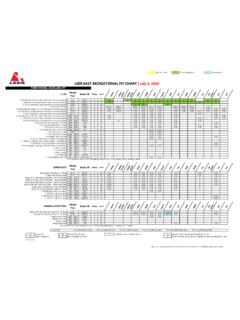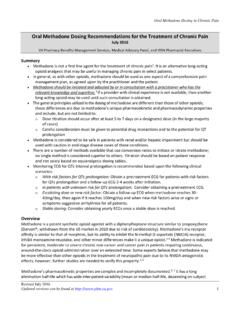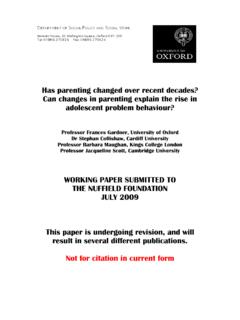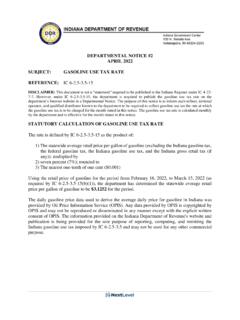Transcription of LEA and School Improvement - ed
1 Archive Information: This guidance has been formally rescinded by the Department and remains available on the web for historical purposes only. LEA and School Improvement Non-Regulatory Guidance REVISED. july 21, 2006. Student Achievement and School Accountability Programs Office of Elementary and Secondary Education Department of Education LEA and School Improvement Non-Regulatory Guidance july 21, 2006. PURPOSE OF THIS GUIDANCE. This non-regulatory guidance updates and expands upon the "LEA and School Improvement Non-Regulatory Guidance" issued on January 7, 2004 .
2 The revised guidance addresses new issues raised by State and local officials in light of their experiences in administering and carrying out the School Restructuring provisions authorized in NCLB and provides additional clarification and rationale about School Restructuring for which the Department received inquiries from the field. This guidance does not impose any requirements beyond those that the law specifies and, where possible, it encourages varying approaches and focuses on what can be done rather than on what cannot be done.
3 The guidance in this document supersedes all prior non-regulatory guidance issued by the Department for LEA and School Improvement . Any requirements referred to in this guidance are taken directly from the statute and the Title I regulations, with citations provided throughout. Except for explicit statutory and regulatory requirements, State and local recipients are free to implement the LEA and School Improvement requirements based on their own reasonable interpretations of the law. SUMMARY OF NEW AND REVISED ITEMS.
4 This document includes a number of new questions to address issues that were undeveloped or did not appear in the previous guidance. Responses to other questions are revised for clarity or responsiveness to issues based on experience gained from the implementation of the Title I. School Improvement provisions. The following are new questions that were not in the January 7, 2004 guidance: G-6, G-8, G-9, G-10, G-11, G-12, G-14, G-15, H-5, H-7, H-8, H-9, H-10, H-11, and J-2. Additionally, included in Appendix A is a chart that illustrates the relationship of School Improvement , corrective action, and restructuring, and the possible consequences for a single School as it moves through the School Improvement process.
5 In addition, the responses to the following questions include significant new information or changes from the 2004 guidance: G-1, G-2, G-3, G-5, G-7, G-13, G-16 and H-2. Questions C-14 and D-3 have been revised to be consistent with language in the restructuring questions that focuses attention on the use of AYP data to target the needs of a School 's students. The following questions have not changed, but in some cases, have a new number: G-4, H-1, H-3, H-4, and H-6. Question F-4 has been revised (November 8, 2007) to remove duplicative language.
6 Ii LEA and School Improvement Non-Regulatory Guidance july 21, 2006. INTRODUCTION 1. ANNUAL REVIEW OF School PROGRESS. A. REVIEW PROCESS 2. A-1. Why do the SEA and LEA conduct an annual review of School progress? A-2. What data do SEAs and LEAs review? A-3. What is the timeline for the review of School progress? A-4. What entity must ensure that this timeline is met? A-5. Should officials in individual schools examine the data that the SEA and LEA. review? A-6. Does the SEA conduct an annual review of schools that do not receive Title I, Part A funding?
7 A-7. Do the requirements for the annual review apply to charter schools? A-8. How must the LEA share the results of a School 's annual review? A-9. May the SEA reward schools that meet or exceed their annual AYP targets? School Improvement PROCESS. B. School Improvement YEAR ONE . 5. B-1. What causes a School to enter School Improvement status? B-2. What purpose is served by identifying a School for Improvement ? B-3. May a School appeal the SEA's determination that the School has not made AYP. for two consecutive years?
8 B-4. Are schools that do not receive Title I, Part A funding subject to consequences if they do not meet AYP targets? B-5. How does a School exit from School Improvement status? B-6. When the LEA identifies a School for Improvement , what information must it provide to parents? B-7. What information must the LEA provide to both parents and the public regarding schools identified for Improvement ? iii LEA and School Improvement Non-Regulatory Guidance july 21, 2006. B-8. What guidelines should SEAs, LEAs, or schools follow when communicating with parents and the public during the School Improvement process?
9 B-9. What are the responsibilities of the LEA after a School is identified for Improvement ? C. School Improvement PLAN .. 8. C-1. What must the School do when it is identified for Improvement ? C-2. What is the purpose of the School Improvement plan? C-3. What topics must the plan address? C-4. How must the plan address the School 's core academic subjects and instructional strategies? C-5. What are examples of instructional strategies that are grounded in scientifically based research? C-6. What are examples of policies and practices with the greatest likelihood of ensuring that all student groups achieve proficiency?
10 C-7. Can a School identified for Improvement implement a comprehensive School reform model as a part of its School Improvement plan? C-8. Why must the plan address professional development? C-9. What kinds of professional development should be provided? C-10. Why must the School Improvement plan contain provisions for teacher mentoring? C-11. What is the source of funding for the professional development detailed in the School Improvement plan? C-12. What is high-quality professional development? C-13.
